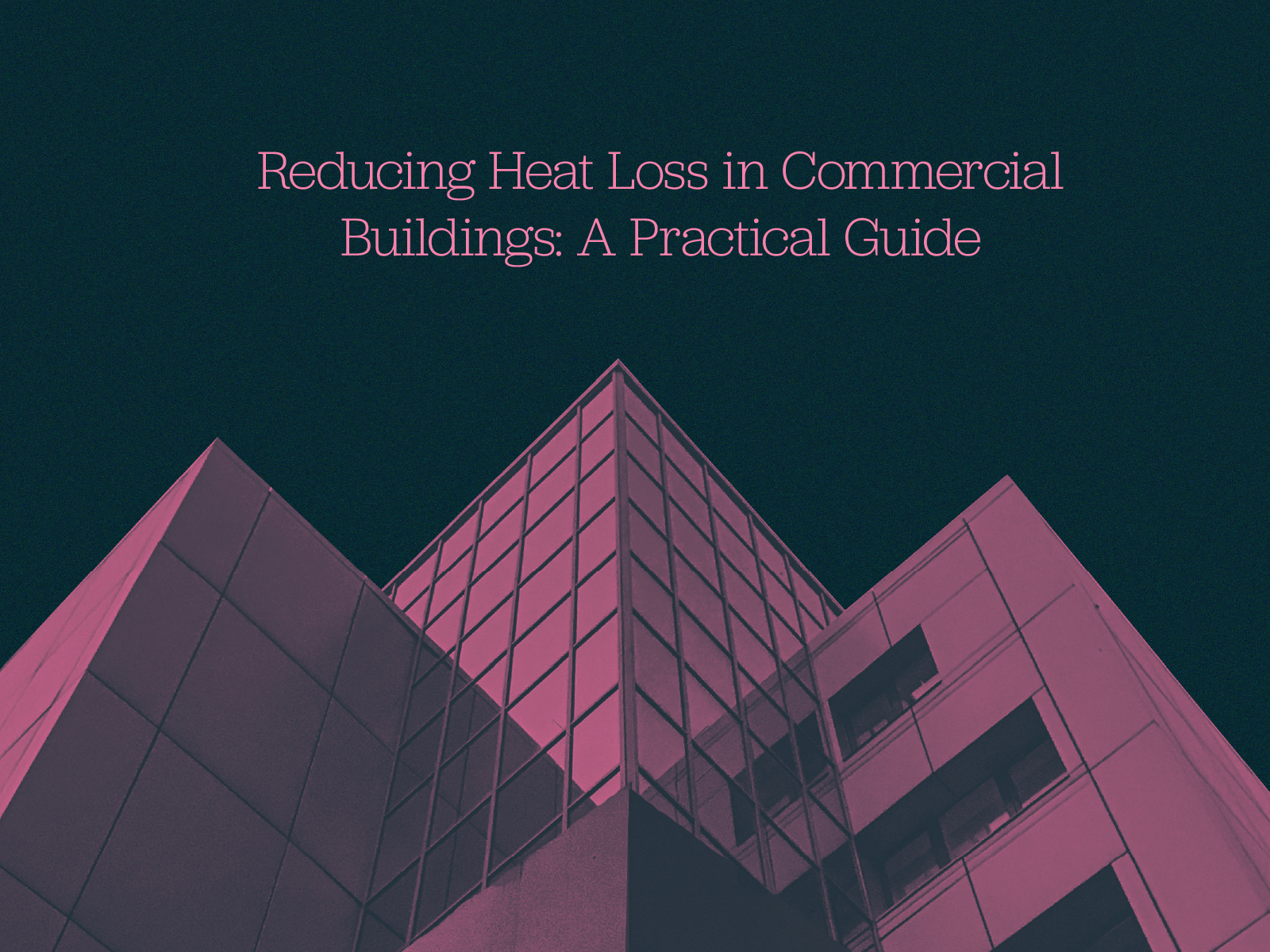As a business owner, you may understand the importance of efficiency. But are you overlooking a major source of wasted resources: heat loss?
Commercial buildings, with their larger footprints and complex systems, often consume far more energy than necessary. This not only impacts your bottom line but can also contribute to a larger environmental footprint.
In this practical guide, we aim to show you how to reduce heat loss, save money, and align with government objectives for a greener future.

Know Your Numbers: Measure and Analyse Your Energy Consumption
The first step to reducing waste is understanding where it’s happening, a good place to start is by auditing your energy usage. Compare your heating bills across seasons (e.g., January vs. July) to identify potential discrepancies. This helps pinpoint areas where insulation or heating systems might be underperforming.
Remember, data is your ally; it reveals where improvements are most needed and whether you are improving. As with all tips mentioned in this blog, Woohoo can assist with an audit, to enable you to find out where your money is being used.
Optimise What You Have: Simple Steps for Immediate Impact
Before investing in major upgrades, focus on maintaining and optimising your existing systems. Often, buildings are not getting the best out of what they currently have and so implementing a maintenance schedule can often yield sizeable returns.
Seal the Gaps: Air leaks can be a major source of heat loss and reduced building comfort. Whilst maintaining adequate ventilation is critical for buildings, checking whether window and door weather strips are still functionality and sealing up uncontrolled leaks and often yield improvements.
Heating System Tuning: Regular maintenance of your heating system is crucial to ensuring it is performing at its best. A well-tuned system operates at peak efficiency, minimising energy waste. This includes boiler servicing, pipework checks, radiator bleeding and ensuring radiators are balanced so the building heats up evenly. A well-tuned heating system will ensure the most heating energy out of the fuel you are purchasing.
Smart Controls: With guidance from your heating engineer, improving the control systems could give a good return based on a small investment and allow tuning the building better to the required heating demands.
These simple, cost-effective measures can significantly reduce heat loss and improve energy efficiency.
Plan for Long-Term Improvement: Sustainable Solutions for Lasting Value
Once you’ve optimised your existing systems, consider long-term improvements that align with current government sustainability objectives.
- Heating system upgrades: Heating technologies are ever evolving with sizeable efficiency gains to be had. Currently with the government’s net zero strategies, there are grants to change to renewable heating technologies.
- Insulation upgrades: Insulation upgrades should be carefully considered so not to compromise the longevity of the building, but upgrades to walls, roofs, and floors to minimise heat transfer should all yield good returns. This is a significant investment, but it offers substantial long-term savings.
- High-performance windows: Windows typically have up to a 30-year lifespan and so can be a great opportunity for improvement. These could be replaced with secondary, double or triple-glazed units to improve thermal performance.
- Heat recovery systems: Often, a lot of commercial processes will involve waste heat. Looking at whether this waste can be captured and re-used can sometimes yield large returns.
- Embrace modern technology: Commercial buildings typically use large amounts of daytime electricity that usually make solar panels a good option for investment. Other technology such as advanced building management systems may also reduce maintenance and maintain better control over the heating and ventilation of a building.
- Remember to consider overheating: Commercial buildings often generate a lot of internal heat and so being ever mindful with a warming climate not to tip the building to have high summer overheating, which in turn will require significant amounts of energy to cool, is important.
Remember, reducing heat loss shouldn’t compromise building comfort or longevity. In fact, it can enhance both. Proper insulation and efficient heating systems create a more comfortable environment for occupants and protect your building from moisture damage and other issues. This translates to increased property value and reduced maintenance costs, making your building a more valuable asset.
Whilst the focus is often reducing the immediate utility bills often the greater gains from improvements are increased building value, reduced maintenance and greater productivity. By implementing these practical strategies, you can reduce heat loss, save money, and contribute to a more sustainable future. Start today and reap the rewards of a more efficient and valuable commercial building.
Looking for Support in Reducing Heat Loss in your Building?
Get in touch with us today, and let’s discuss how Woohoo can support you in reducing your bottom line.
